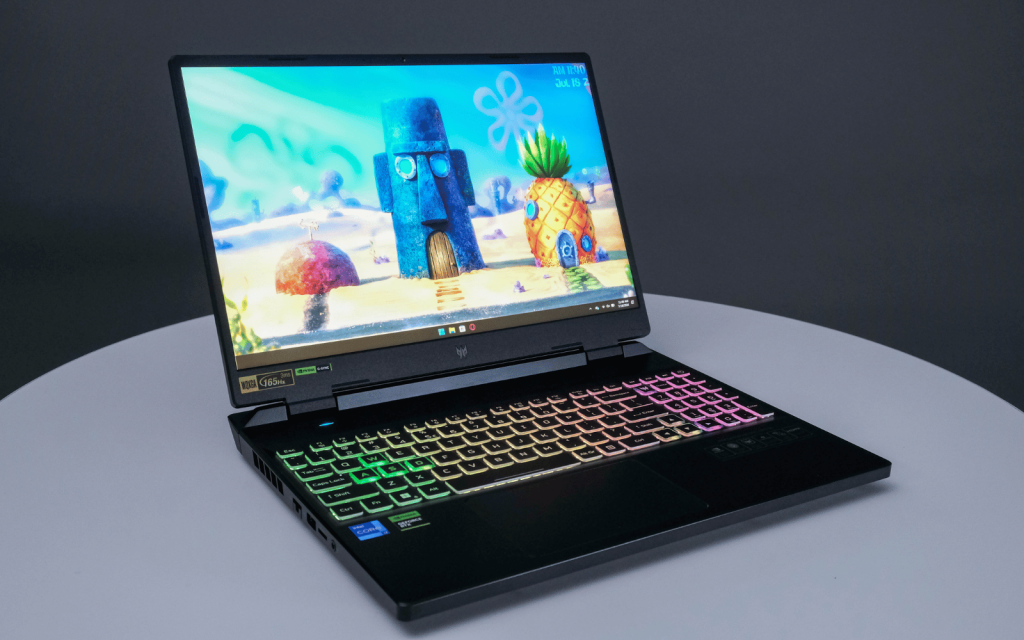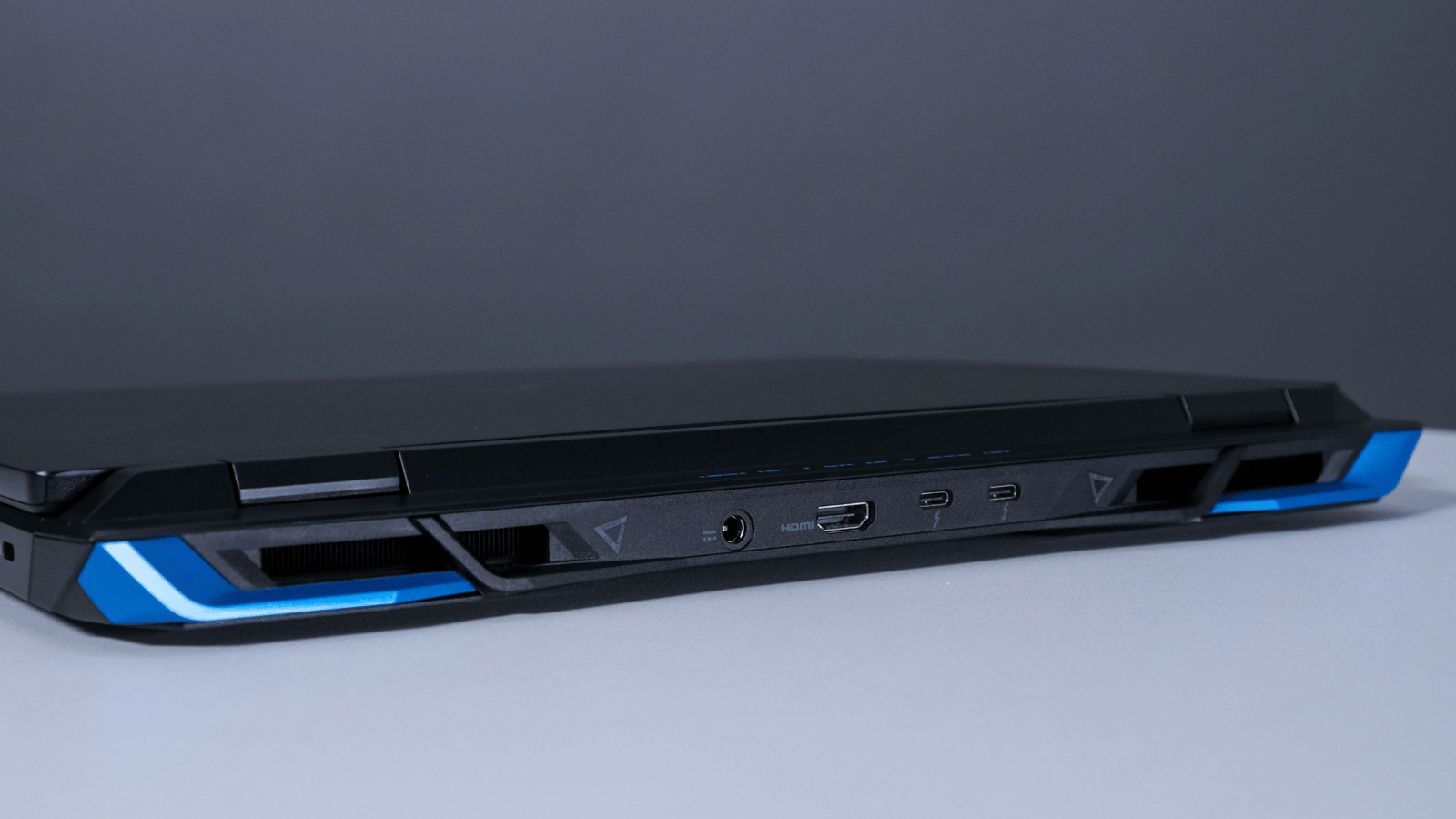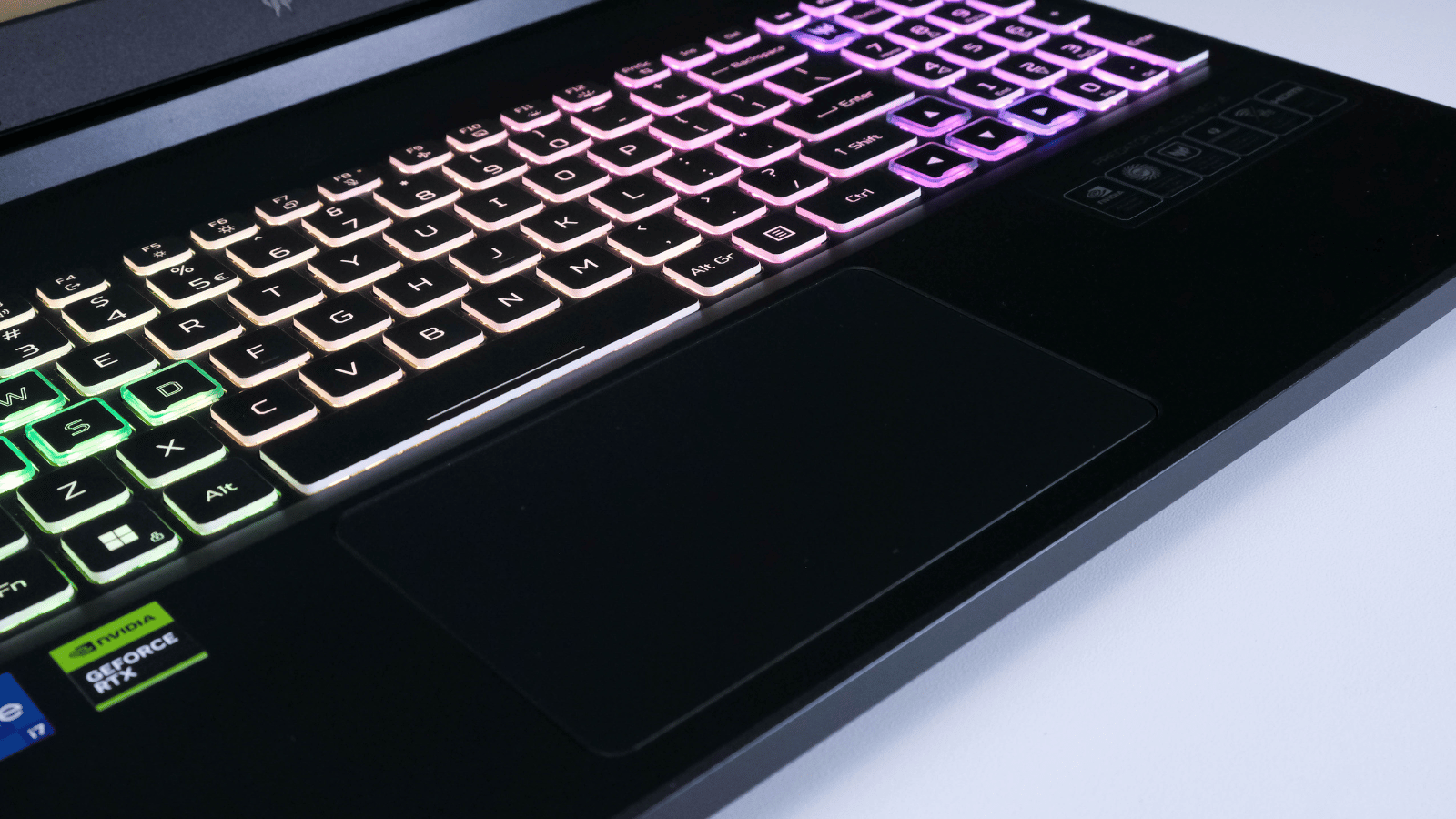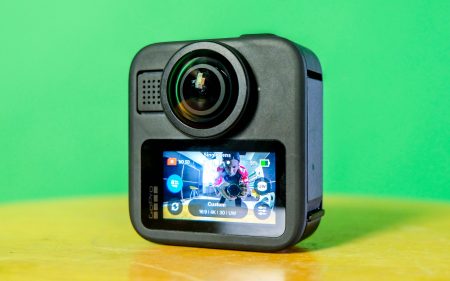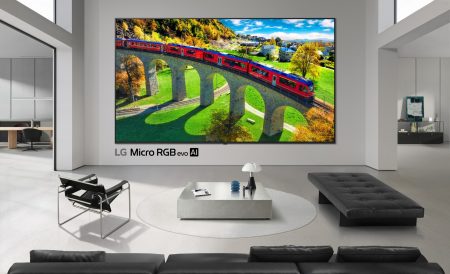The Acer Predator Helios Neo 16 has all the performance you'd need to replace your unwieldy desktop, while also dressing conservatively for a day at the office.
-
Design
-
Display
-
Performance
-
Value
-
Features
The thing about Acer is it likes to stick a hand into all the pies. We don’t mean that literally (we’re not sure what they do in their free time), but when it comes to devices, it’s got something on the market to suit every occasion. Gaming, productivity, commerce and creativity. The Acer Predator Helios Neo 16, if it wasn’t obvious, is one for gamers. One that we quite liked, after spending just over two weeks with this monster. Even if the battery wasn’t all it’s cracked up to be.
Almost underrated
Just like the Helios 300 that came before it, Acer has opted to shroud its latest offering in a sturdier plastic, except for when it comes to the device’s lid and keyboard platform, which are made up of a matte black brushed aluminium alloy. This is a premium gaming laptop, after all.
Even though this is a machine meant for gamers, the Helios Neo 16 is still rocking a somewhat understated design that might be more suitable in an office setting than, say, anything that comes from Alienware’s warehouse. Even with its less-than-shiny exterior, this is still a gaming laptop, which means it came loaded up with enough RGB lights to blind your average Reddit mod.
All that RGB can be found in the backlit keyboard that, for the most part, we had no trouble using. Sure, we had some issues – like the Left Shift and Ctrl keys being too small. And don’t even get us started on the oddly-placed dedicated Predator button that we accidentally hit more times than we’d care to admit. It was all worth it for the satisfyingly tactile keyboard we received, and an overly-large left-leaning trackpad we came to miss.
Unsurprisingly for a premium gaming laptop, Acer’s included a full house of ports here. Along the right side is the Ethernet port, headphone and mic combo jack, SD card reader and a singular USB-A port. Mirroring that side is two more USB-As (of the Gen 2 variety). Finally, the important stuff is found ‘round the back, with the power port, HDMI 2.1 and two Thunderbolt 4 USB-Cs all making homes there.
Our biggest complaint? We weren’t a fan of Acer’s placement of the vents underneath the thing, which is where the laptop pulls in all the outside cool air it needs. There are rubber feet on the bottom to prop itself up and create a slight air path, but none large enough to make much of an impact. We’d recommend a decent stand to go with it.
Propping up the GPU
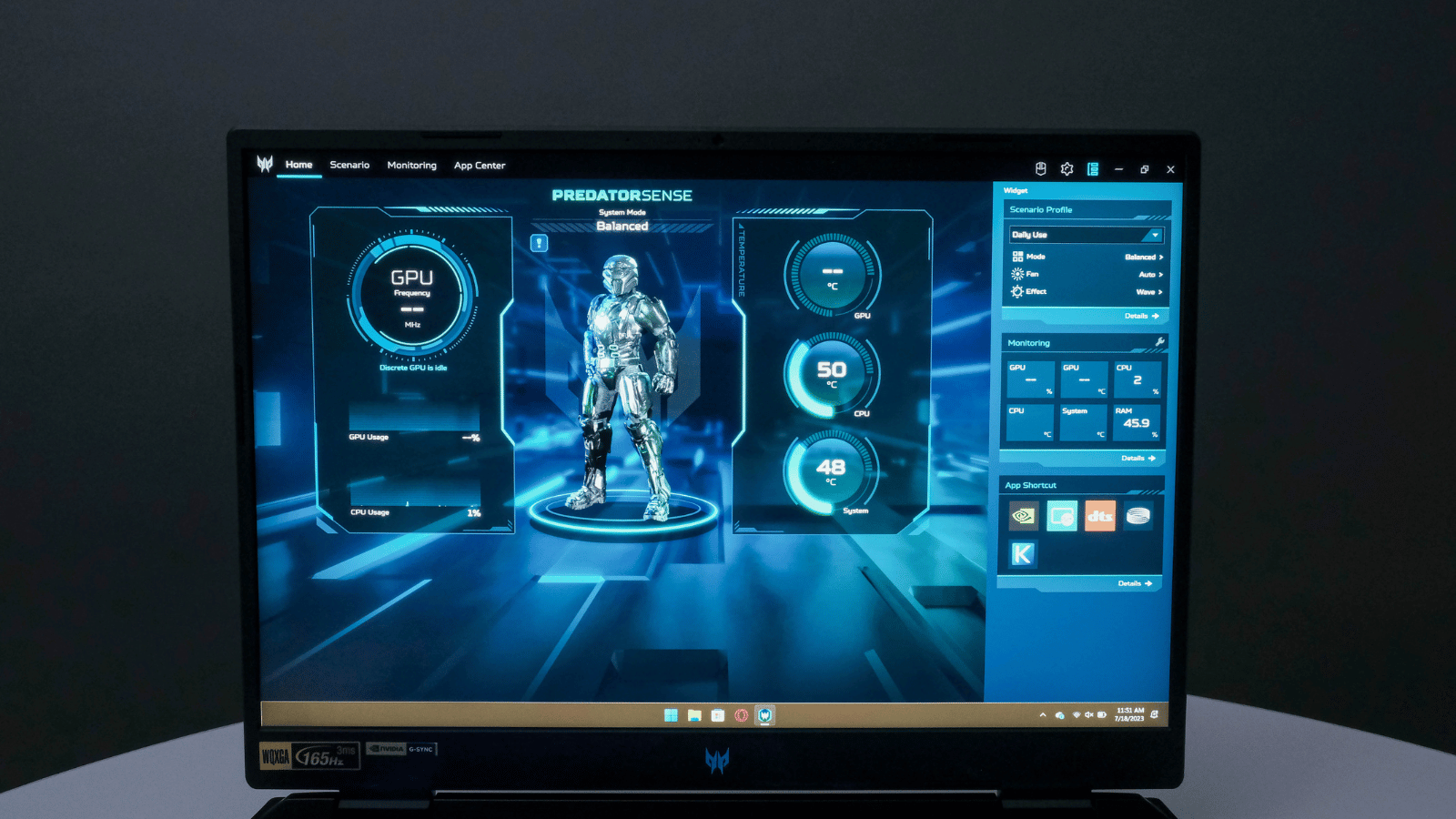
It’s all well and good talking about the Neo 16’s outer shell, but a colourful keyboard won’t get you far in your quest to run Crysis, will it? Our review model came filled to the brim with a Core i7-13700HX processor, 16GB of DDR5 RAM, and an RTX 4060 GPU with 8GB of its own GDDR6 VRAM.
The 90WH battery was… fine. We’d recommend parking yourself near a plug-point if you’re going to be doing serious gaming. The issue has less to do with the capacity, a standard for laptops in this price range, and more to do with the tech the Neo 16 is packing. You’ve seen the specs – it’s no wonder we’re only netting two hours when Eskom strikes.
Give the Neo 16 a break from gaming, however, and you’ll get around six hours of life before the warning signs start blaring. That’s still not enough for an entire day, but it’ll suffice until you can get to a plug. Light work, or a casual Netflix stream? You’re golden.
But that’s to be expected from a power-hungry machine like this. How often are you whipping out The Witcher 3 when you’re not at home (or at work)? That’s right, hardly. Even so, this gives you the choice, but don’t expect it to last very long.
It’s worth making friends with Acer’s Predator Sense toolbox, accessed by that Predator button we pressed a little too often. Here, you’ll find a 3D-animated visual of the laptop’s ‘health’ represented by some Master Chief lookalike. It’s also where you’ll fiddle with the laptop’s four preset profiles; Quiet, Balanced, Performance and Turbo.
You’ll only ever need Performance and Turbo for anything gaming related. Balanced and below saw us through everything else with ease, and quietly too. Performance is when you’re looking for a few extra frames and a fan or two to kick in. Turbo? It’ll knock performance up to 100 and set the fans into overdrive. We’d suggest pairing that up with a decent pair of noise-cancelling headphones. Or not, if you want your laptop to double as a white-noise machine.
When it came time to boot up something other than Minecraft or Sid Meier’s Pirates, we were quite happy with what we got. Our go-to game of the moment is The Witcher 3 which the Neo 16 ate up on the highest settings while holding onto a decent framerate. The same could be said for Rocket League, which consistently ran at the 120fps mark without a hitch. It couldn’t make up for our abysmal goalkeeping, but this is a laptop, not a miracle worker.
Display King
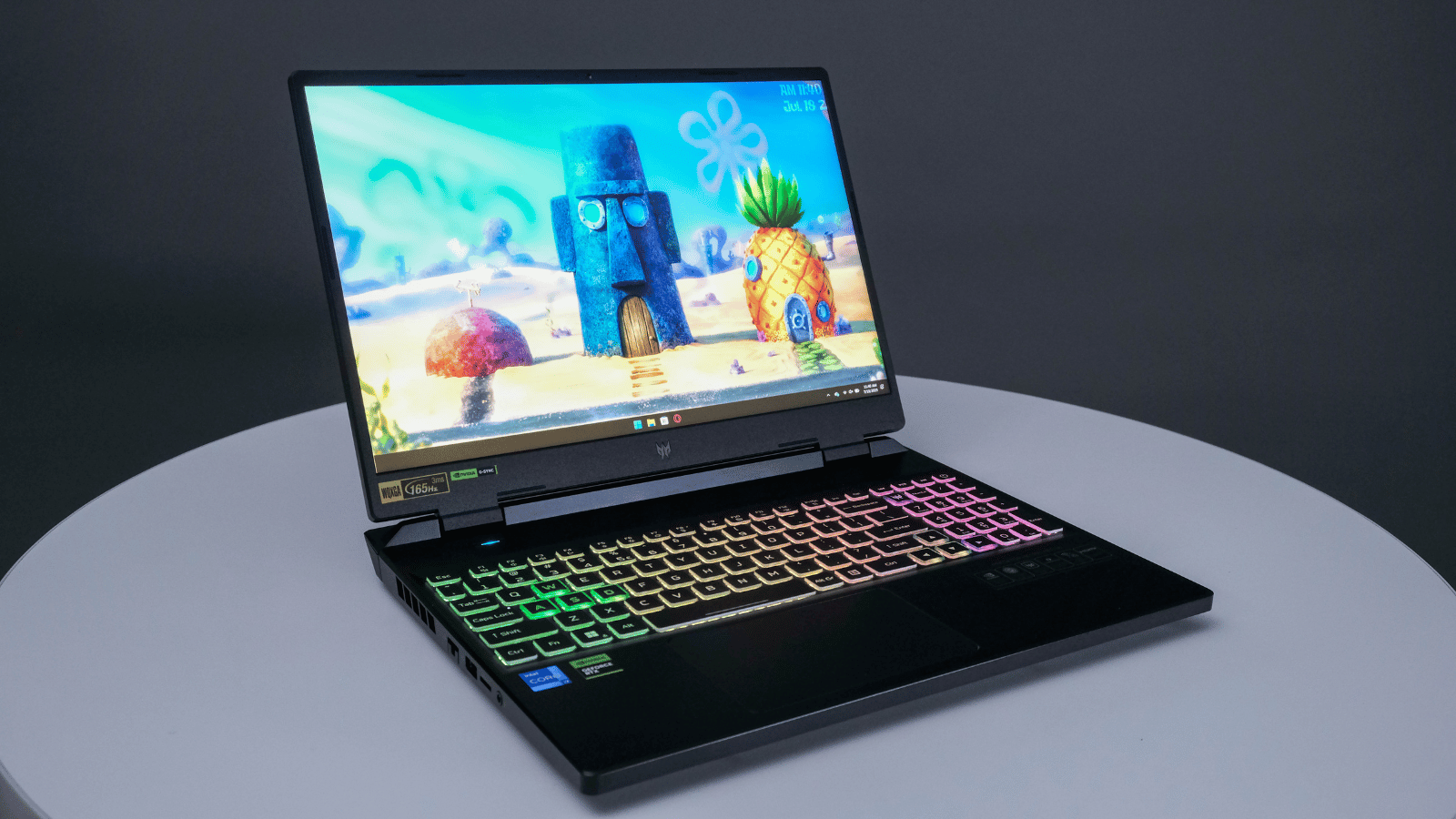
If you’re going to be playing some of the best games out there, you’ll want a half-decent display to go with it. Acer has obliged, hooking the Neo 16 up with a 16in 2560×1600 IPS panel complete with a 165Hz refresh rate and a 500-nit peak brightness. Colour us impressed.
It’s quite capable of handling anything you throw at it, even if that’s not always gaming. It’ll do just fine when it comes to casual video editing or graphic design but you’ll probably want to look for something more accurate for professional work.
Acer Predator Helios Neo 16 verdict
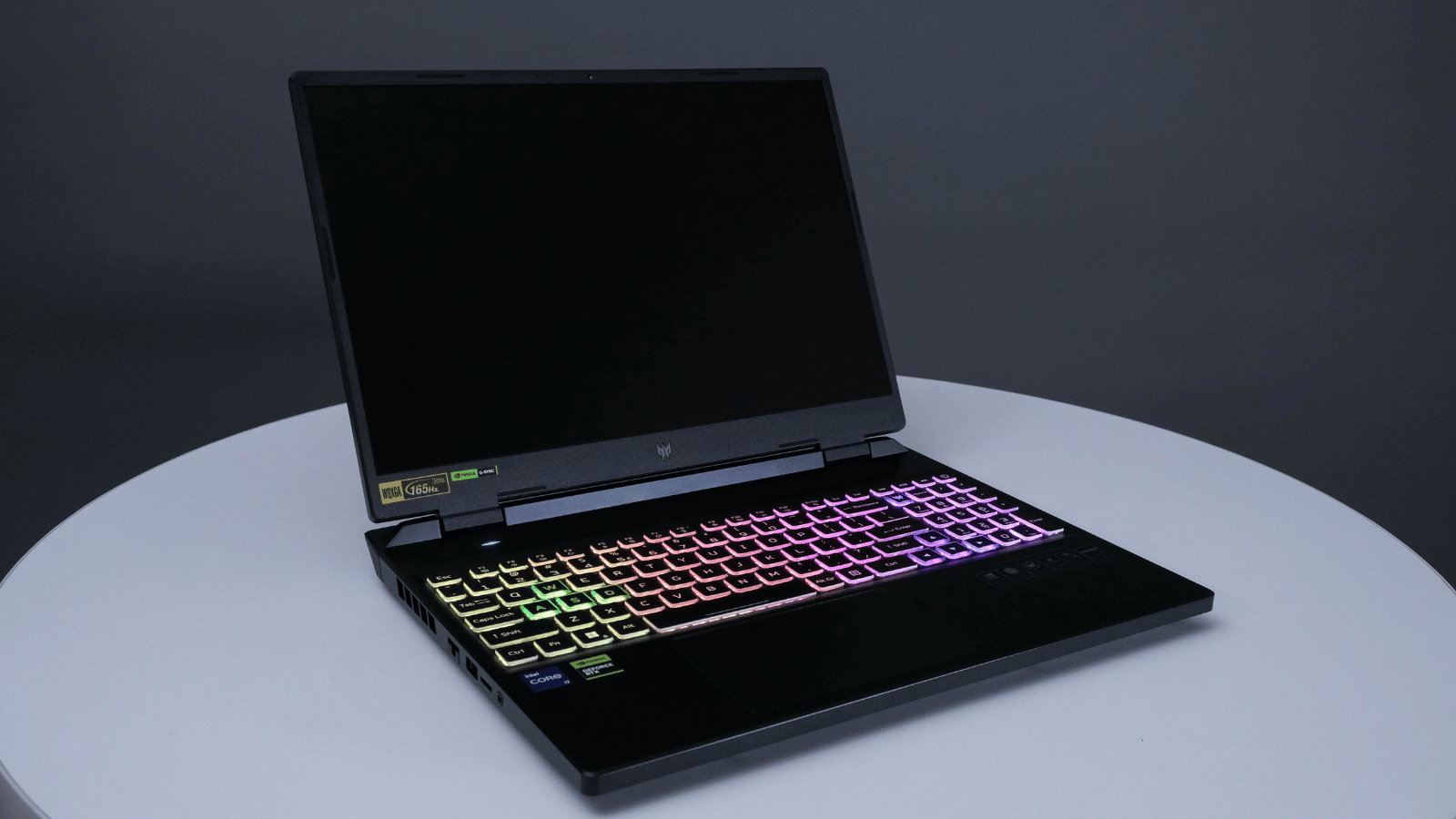
Putting aside the less-than-ideal battery life or the not-so-cool underneath vents, we absolutely fawned over the Helios Neo 16 the entire two weeks we had it. That was slightly marred when we saw the price – coming in at R43,000 (or R40,700 if you’re feeling savvy) for 1TB of SSD storage – even if that is the norm for a machine of this calibre.
If the R40,000+ price tag is just a little too steep, there are cheaper models out there with smaller SSDs and lesser CPUs. These models are few and far between, unfortunately, so you’ll need to employ a bit of scouting to get something within your price range. Either way, you’re still getting a beautiful display and excellent performance.

